Thrips are one of the most aggravating pests for both indoor and outdoor plants. Do you want to know if these insects kill plants? In order to assist you with your inquiry, we did the research and found out.
Thrips can cause damage to plants, but it typically does not kill plants outright. However, in severe infestations, or in combination with plant viruses, it can lead to reduced yields, stunting, and in some cases, death.
We'll go into greater detail about this insect in this article. Additionally, we'll discuss how to get rid of them, whether your plant can thrive with them, and more. So keep reading.
Can Thrips Kill Plants?
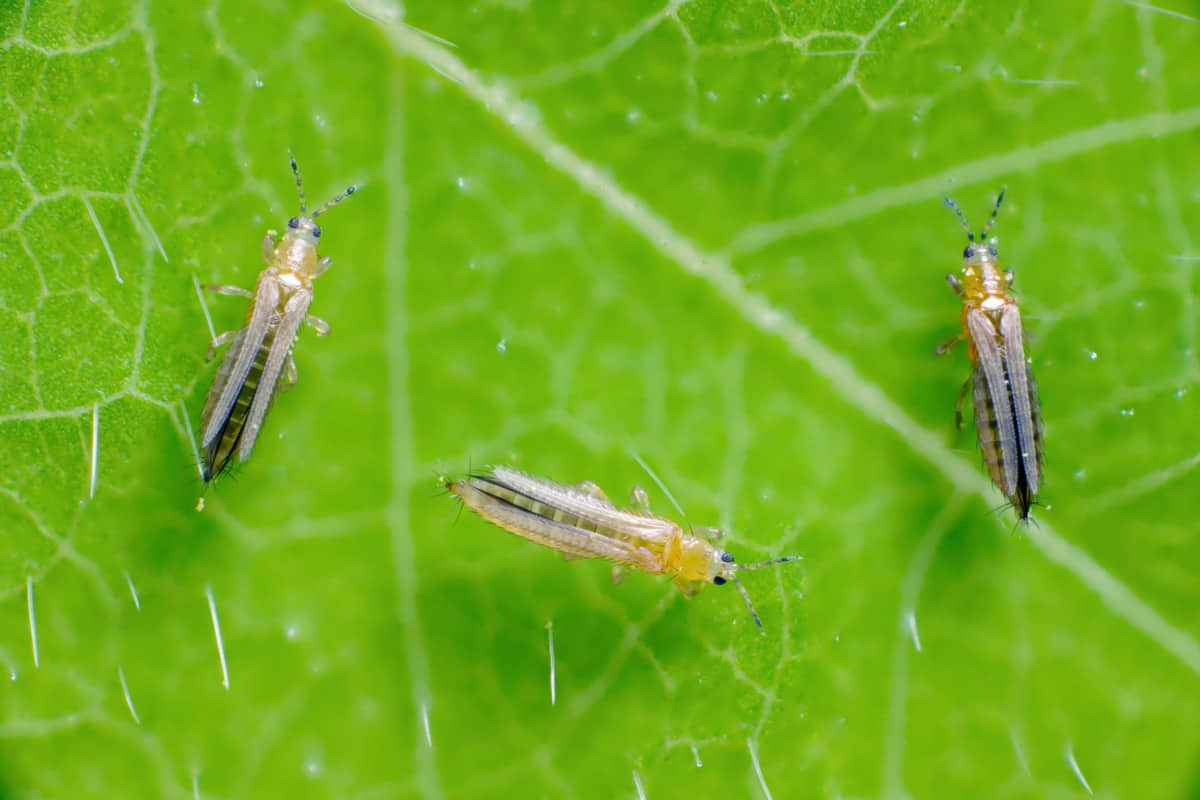
Thrips are small, winged insects that can cause damage to a variety of plants, including flowers, fruits, and vegetables. They are most active during the day, especially during warm and sunny weather.
Depending on the type of plant and the degree of the infestation, there are numerous ways that thrip damage might appear. Some common signs of thrip damage include discolored or distorted leaves, stippling or silvering, wilting, deformation of flowers or fruits, black fecal spotting, and reduced growth.
During the day, thrips are usually found on the foliage, where they feed by piercing the plant's cells and sucking out the contents. They move around the plant and when disturbed, drop to the ground or fly away.
In severe infestations, thrips can kill plants. Thrips can also transmit plant viruses, which can further weaken or kill plants. It is important to identify and control thrips infestations as soon as possible to prevent damage to plants.
It is worth noting that different thrips species have different preferences for host plants and different behavior, so the activity patterns can vary depending on the specific thrips species.
Additionally, the activity of thrips can also be affected by temperature, humidity, plant growth stage, and the presence of natural enemies.
What Kills Thrips The Best?
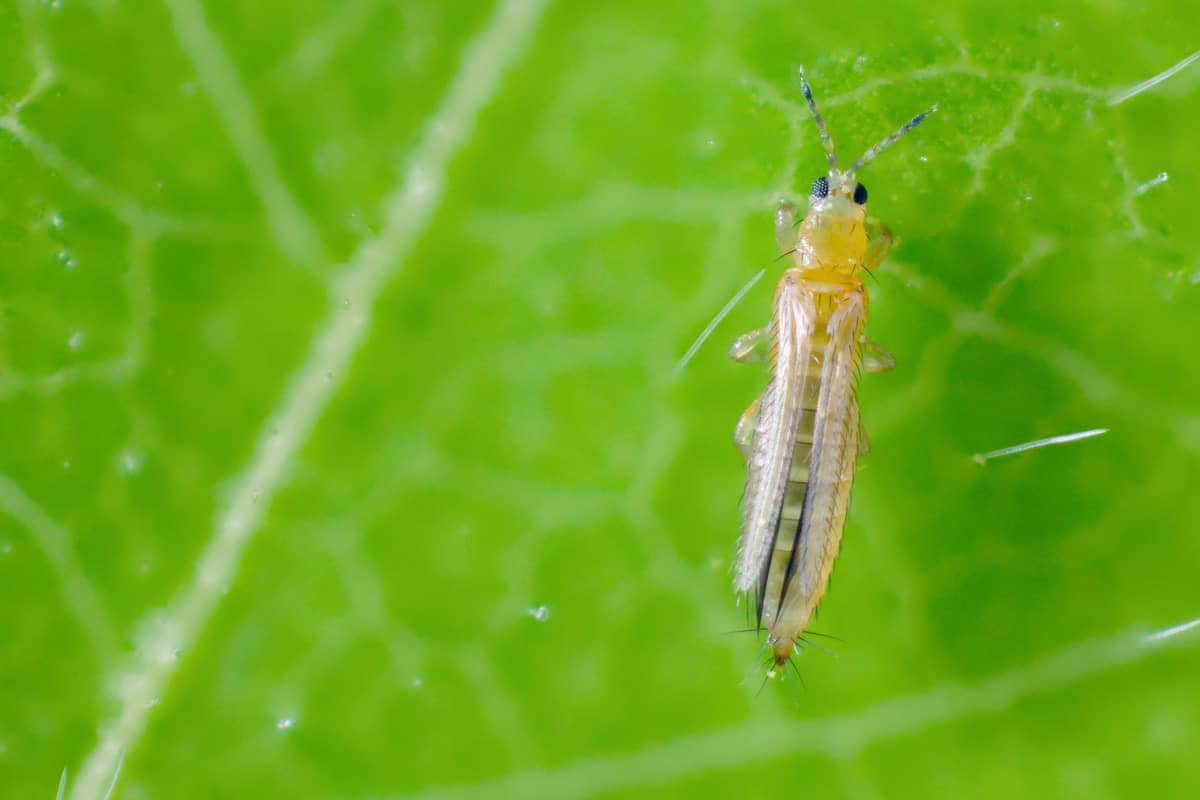
There are several methods that can be used to effectively control thrips and protect plants from damage. However, the best method of control will depend on the specific situation and the type of thrips. Here are some of the most effective options:
Cultural Control
Maintaining healthy plants through proper watering, fertilization, and pruning can help to reduce the risk of thrips infestations. Additionally, removing and destroying infested plant parts can help to control the population.
Physical Control
You can use yellow sticky traps to trap adult thrips. You may also use screens or other barriers to prevent thrips from reaching plants or utilize high-pressure water sprays to knock thrips off plants.
Click here to see these yellow sticky traps on Amazon.
Click here to see this high-pressure spray nozzle on Amazon.
Biological Control
Some species of predatory mites and insects, such as the western flower thrips predator and the six-spotted thrips predator, can help to control thrips populations. Encouraging natural predators such as ladybugs, lacewings, and parasitic wasps would help too.
Chemical Control
Chemical methods include using pesticides specifically labeled for thrips control. These include insecticides that can quickly knock down or kill thrips such as neonicotinoids, pyrethrins, and spinosad.
Click here to see this pyrethrin insecticide on Amazon.
Click here to see this spinosad concentrated on Amazon.
Also, using insecticidal soap, horticultural oil, and neem oil as a repellent and a feeding deterrent for thrips. To ensure the safety and efficient application of pesticides, it is crucial to carefully read and adhere to label instructions.
Click here to see this insecticidal soap on Amazon.
Click here to see this neem oil on Amazon.
It is also important to rotate pesticides and to use them in conjunction with other control methods for the best results. It's also a good idea to consult with a professional to know which chemical control is the most suitable for your plant.
Integrated Pest Management (IPM)
An IPM approach combining cultural, physical, biological, and chemical control methods, can be the most effective way to control thrips.
For example, using a combination of sticky traps and biological control agents can be more effective than using either method alone.
Can My Plant Survive Thrips?
The degree of the infection, the kind of plant, and the plant's general health, all have a role in whether or not a plant can withstand thrips. If the infestation is caught early and treated effectively, the plant may be able to survive.
However, if the infestation is severe and left untreated for an extended period of time, the plant may become weakened and more susceptible to other pests and diseases, which can ultimately lead to the plant's death.
Healthy plants that are well-maintained and cared for are generally more able to withstand thrips damage than stressed or unhealthy plants. Therefore, maintaining good cultural care practices can help to improve the plant's ability to survive thrips infestations.
It is also important to use appropriate control methods and to consult with professionals, as thrips have several generations per year, so multiple treatments may be needed to completely eradicate the population.
In some cases, even with good care and treatment, the damage caused by thrips may be too severe for the plant to survive. In those cases, it may be necessary to remove and replace the affected plant.
What Plants Do Thrips Like And Dislike?
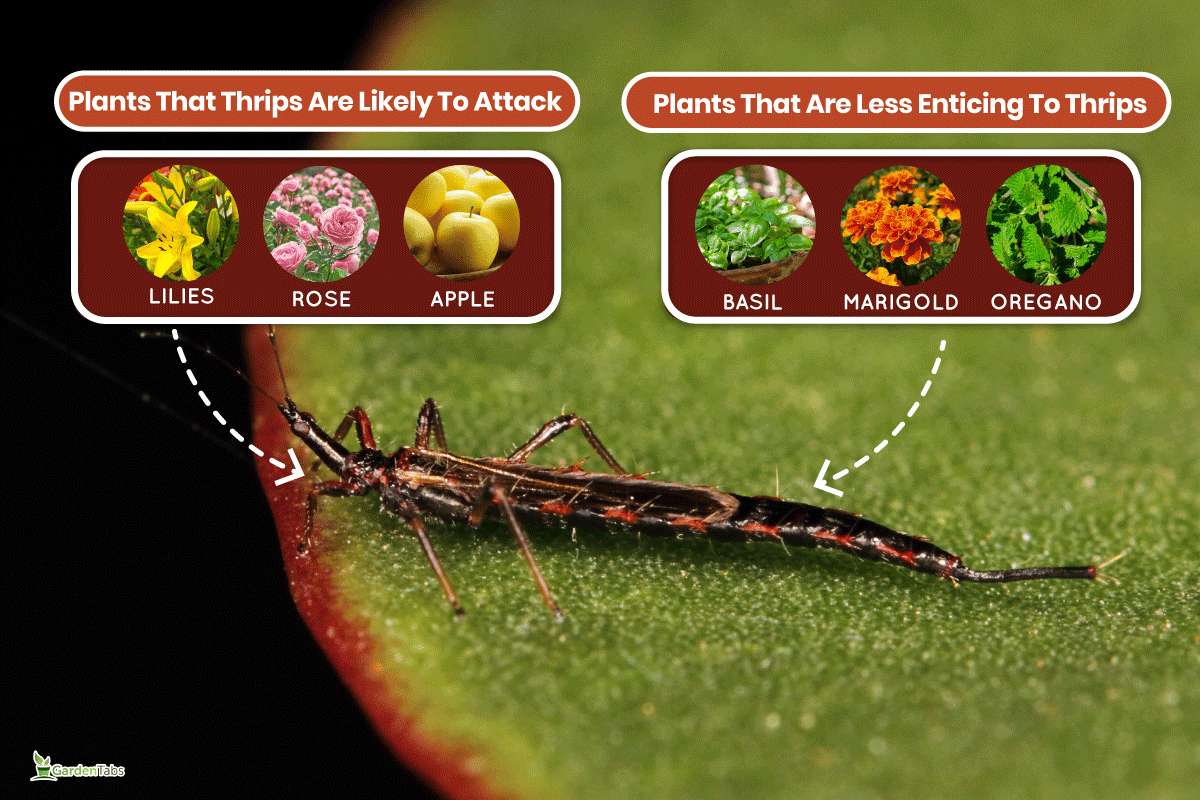
Thrips are known to feed on a wide variety of plants, but some plants are more prone to thrips infestations than others.
Plants That Thrips Are Likely To Attack
Some plants that are particularly prone to thrips include:
- Flowers: Roses, lilies, daisies, gerbera daisies, snapdragons, carnations, and chrysanthemums.
- Ornamentals: Poinsettias, Chinese evergreens, dragon tree, cheese plant, ZZ plants, radiator plants, alocasia, and orchids
- Vegetables: Tomatoes, carrots, peppers, cucumbers, beans, onions, cauliflower, cabbage, and eggplants,
- Fruit trees: Apple, peach, pear, apricot, plums, and citrus.
- Greenhouses: Greenhouse-grown plants are also susceptible to thrips infestations, as the thrips can easily move from one plant to another.
Knowing that thrips can move from one plant to another, you can plant these prefered plants as "trap plants" that will lure thrips away from plants you seek to protect.
Plants That Are Less Enticing To Thrips
Certain plants have been reported to be less attractive to thrips and may even repel them. These include:
- Herbs: Basil, catnip, chives, oregano, rosemary, citronella, garlic, and thyme.
- Flowers: Irises, marigolds, nasturtiums, petunias, lavender, and zinnias.
- Groundcovers: Pachysandra and scented geraniums.
However, even plants that are less attractive to thrips can still become infested if conditions are favorable for thrips, such as warm and humid weather, or if the plants are stressed or unhealthy.
But mind you, if you are planning to use these plants to prevent thrips infestation then it is not 100% effective as thrips can still find other ways to infest plants nearby.
Additionally, the repellent properties of these plants can vary depending on the specific cultivar, growing conditions, and other factors.
Do Thrips Spread Easily?
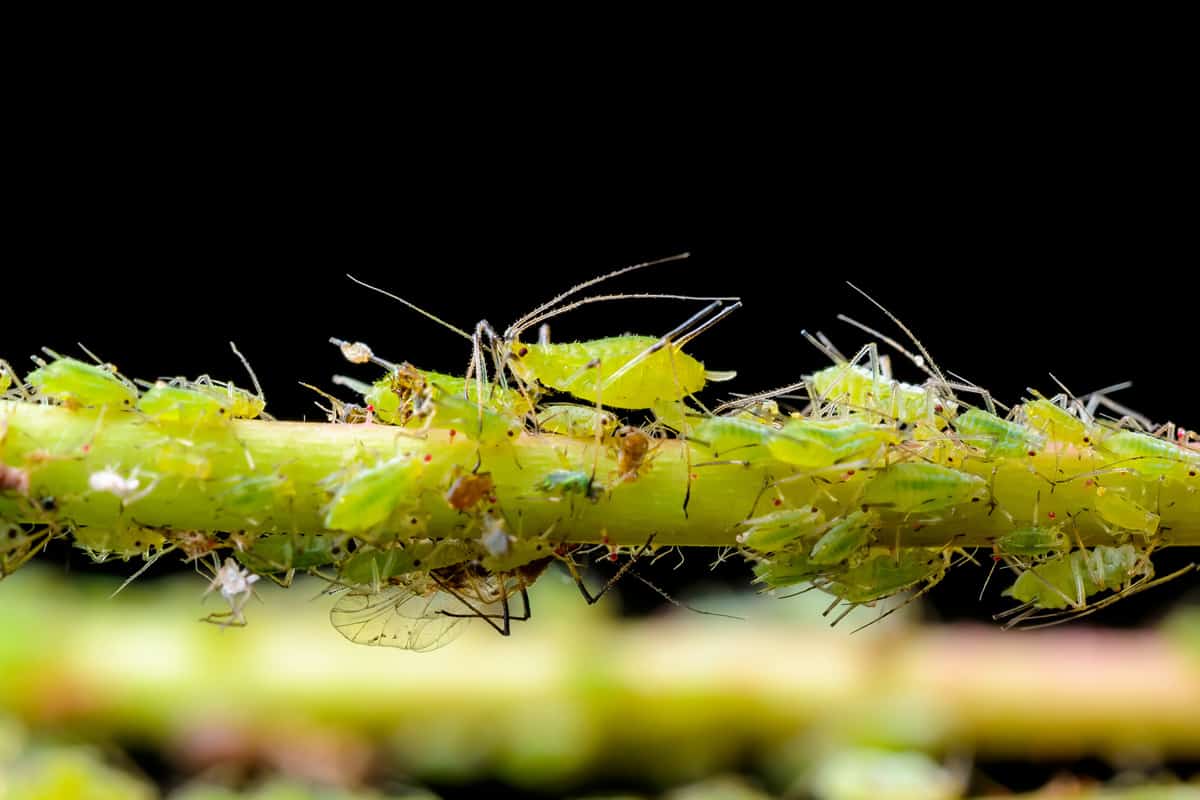
Thrips are small, winged insects that can spread easily from one location to another. They are known to be able to fly long distances, which allows them to quickly colonize new areas. They can also be spread by wind or through human activity, such as through the transportation of infested plants.
Thrips can infest a wide range of plants. In agriculture, thrips can be a major pest problem. They can cause damage to crops, leading to reduced yields and lower-quality produce. They can also spread plant viruses, which can further damage crops.
To prevent the spread of thrips, it is important to take appropriate measures to control their populations. It is also important to practice good sanitation to prevent the spread of thrips. Additionally, avoid transporting infested plants.
Can Thrips Cause A Rash?
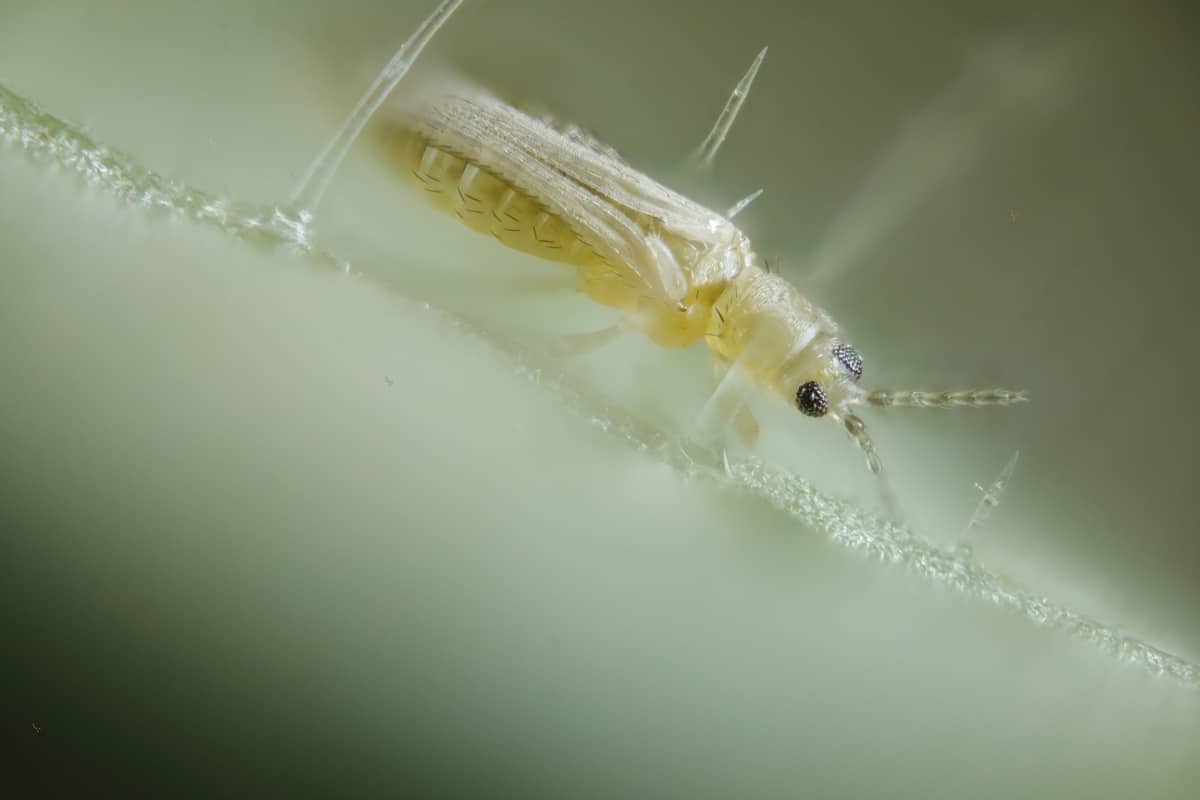
Thrip can also bite humans, and in some cases, this can cause a rash. The rash is usually itchy and can appear as small, raised red bumps on the skin. The rash is caused by an allergic reaction to the saliva of the thrips.
Symptoms of a rash caused by thrips bites may include redness, itching, and swelling in the affected area. Some people may also experience a burning sensation or pain. In rare cases, the rash can be severe and may cause blisters, hives, or even anaphylaxis, a severe allergic reaction.
However, not everyone will develop a rash from thrips bites. Some people may be more susceptible to the bites due to their individual sensitivity to the thrips' saliva. Additionally, the severity of the rash can vary depending on the person and the number of thrips bites they have received.
If you experience a rash after being bitten by thrips, it is best to avoid further exposure to them. Applying a moisturizer or calamine lotion to the affected area may help to relieve itching and inflammation.
Click here to see this calamine lotion on Amazon.
Over-the-counter antihistamines may also be useful in reducing symptoms. If the rash persists or becomes severe, it is important to consult a doctor.
Click here to see these antihistamines on Amazon.
In order to prevent thrips bites, it's important to avoid areas where thrips are known to be present. This may include gardens or fields where flowers or fruits are grown.
But if you operate in a field where you can be exposed to thrips, it's crucial to take the necessary precautions, such as donning long sleeves and long pants and applying insect repellents.
Click here to see this insect repellant on Amazon.
Conclusion
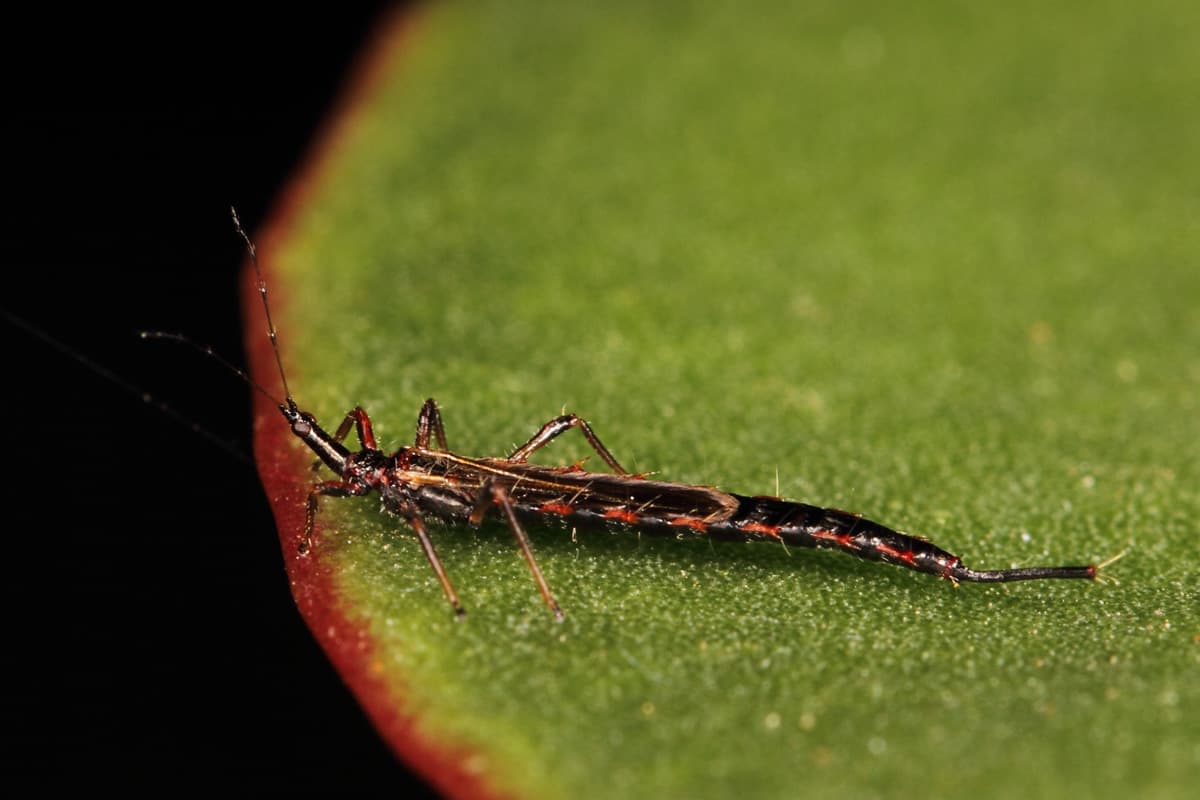
Knowing the facts about thrips, we hope this post will assist you in preventing an infestation of your plants to protect them from damage or worst death. Fortunately, your plants will appreciate any method you use to get rid of these pesky insects!
Before leaving, check out some interesting topics we have below.









